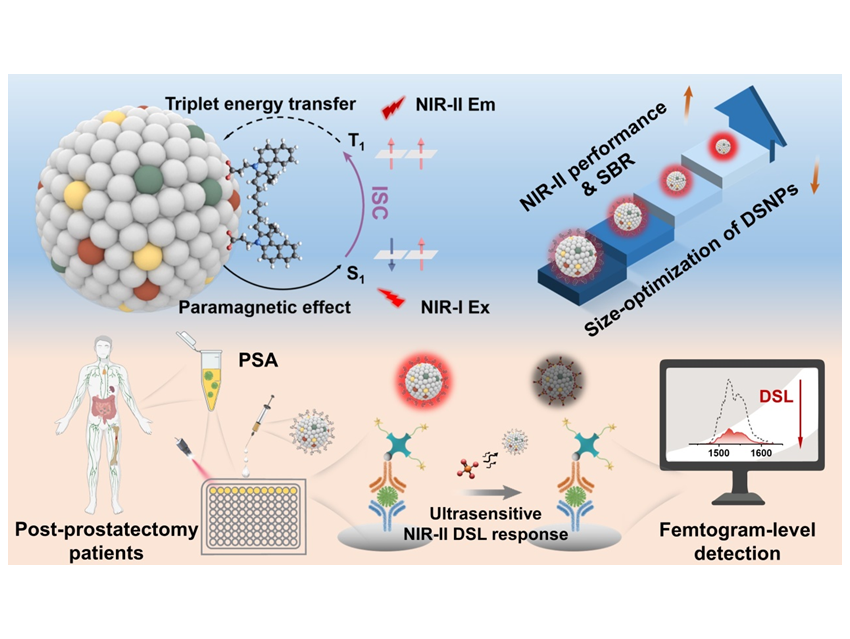The early diagnosis and monitoring of recurrence of prostate cancer (PCa) through the detection of prostate-specific antigen (PSA) remains a formidable challenge, particularly for post-radical prostatectomy patients (patients who have had their prostate removed) because their PSA levels are extremely low (100 pg/mL). At such low concentrations, tests are affected by background noise and have a low signal-to-background ratio (SBR <10), making it challenging to make timely treatment decisions or guide additional therapy.
To address these limitations, Xueyuan Chen, Fujian Institute of Research on the Structure of Matter, Chinese Academy of Sciences, Fujian, and colleagues have developed a unique triplet energy transfer (TET)-sensitized downshifting luminescence immunosorbent assay (TET-DLISA) platform using NaGdF₄:Yb³⁺/Er³⁺ downshifting nanoparticles (DSNPs) functionalized with the near-infrared dye Cypate. The resulting DSNP@Cypate nanocomposites served as near-infrared II (NIR-II) signal reporters in TET-DLISA. In the presence of PSA, alkaline phosphatase (linked to the assay) produces phosphate ions. These phosphate ions compete with Cypate, displacing it from the nanoparticles. This displacement quenches (reduces) the NIR-II luminescence signal mediated by TET, so the amount of PSA can be quantified by measuring the decrease in light emission.
This strategy enabled an exceptional SBR of 273 and a record-low detection limit of 98 fg mL⁻¹ for PSA, outperforming traditional ELISA by three orders of magnitude. Moreover, clinical serum tests showed strong correlation with commercial kits, highlighting its potential for postoperative PSA monitoring and early recurrence diagnosis.
These findings demonstrate the transformative potential of the TET-DLISA platform for early detection of post-surgical PSA relapse, enabling timely intervention and precision oncology. This work represents a substantial advance in luminescent immunoassays, paving the way for new methods in point-of-care cancer diagnostics.
- Triplet Energy Transfer-Sensitized NIR-II Luminescent Nanoprobes for Ultrasensitive Detection of Prostate-Specific Antigen
Hang Gao, Yan Liu*, Lijuan Liu, Renfu Li, Datao Tu, Yao Lin, and Xueyuan Chen*
Aggregate 2025
https://doi.org/10.1002/agt2.70178


